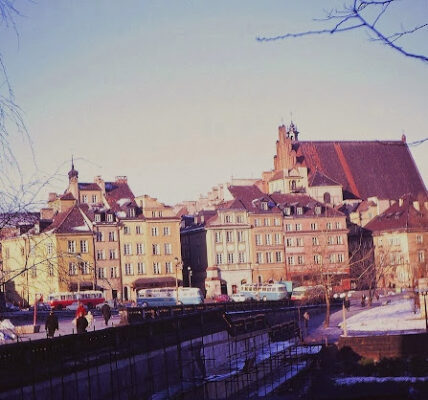Have you ever looked at something and felt like your eyes were playing tricks on you? Maybe it was an optical illusion or a strange object that just didn’t make sense at first glance. Well, a recent viral image has taken that experience to a whole new level, leaving people around the world scratching their heads. What looked like a colorful Lego display turned out to be something entirely different—and much more fascinating.
This image isn’t just a visual puzzle; it’s a lesson in how our brains interpret the world around us. Let’s dive into the story behind this viral phenomenon and explore why our eyes sometimes deceive us.
The Mystery Behind the Image: What Do You Really See?

When this image started making the rounds on social media, most people saw what they thought was a large array of colorful Lego blocks, neatly arranged and lined up. But there was something strange about it, something that didn’t quite fit. Why would there be so many Lego blocks arranged in this way, and on such a massive scale?
The truth, as it turns out, is far more surprising. The photograph, which looks like an intricate Lego display from above, is actually an aerial shot of a huge collection of retired buses. Yes, that’s right—buses! Taken from a helicopter over Hangzhou in Zhejiang Province, China, this image captures row after row of vibrant, decommissioned buses arranged so precisely that they create the illusion of Lego blocks.
The Power of Optical Illusions: Why Our Brains Misinterpreted the Image
When the majority of people first saw this image, they assumed it was something familiar, like Legos or an art installation. This reaction reveals something interesting about the way our brains work. The brain is constantly trying to make sense of what we see by matching unfamiliar objects to patterns or shapes that we already know. In psychology, this phenomenon is called visual pareidolia, where the mind perceives familiar patterns in random stimuli.
In this case, the uniformity of the buses, combined with their bright colors and orderly arrangement, led our brains to associate the image with something more familiar, like Lego blocks. The result? Thousands of people were fooled, assuming they were looking at a whimsical toy display rather than a bunch of retired vehicles.
Why This Image Went Viral: A Lesson in Perception and Reality
When the image began circulating on social media, it quickly captured attention and sparked conversations worldwide. People were fascinated by the way their minds could be so easily tricked. The initial confusion and surprise soon turned to curiosity, with viewers sharing the image and challenging others to guess what they were seeing.
So, why did this particular image resonate with so many people? Part of the answer lies in the sheer novelty of the subject matter. We don’t often encounter massive fleets of retired buses, let alone see them from a bird’s-eye view. Additionally, the illusion of Lego blocks taps into a sense of nostalgia, as Legos are instantly recognizable to most people. This combination of surprise and familiarity made the image highly shareable and the perfect candidate to go viral.
How Visual Pareidolia Shapes Our Perception
Our brains are hardwired to look for patterns; it’s a survival mechanism that helps us make sense of our environment. Visual pareidolia, the same phenomenon that causes us to see faces in clouds or animals in rock formations, is responsible for the way we perceived these buses as Lego blocks. When we encounter something unfamiliar, our brains instinctively try to connect it to things we recognize, even if those connections aren’t entirely accurate.
In this case, the image’s composition—the uniform shapes, vibrant colors, and orderly rows—triggered our brain’s tendency to identify it as a familiar scene. Our minds created a shortcut to a recognizable object, even though reality didn’t match our initial assumption. This viral image demonstrates how our perceptions are often based on expectations and past experiences, which can sometimes lead us astray.
The Impact of Assumptions on Visual Interpretation
This image is more than just a fun visual trick; it’s a powerful reminder of how assumptions influence our perception. When we assume we know what we’re looking at, we may overlook details that could reveal a different reality. In this case, those who quickly identified the image as Lego blocks might have missed the cues—the scale, the aerial perspective, and the bus shapes—that hinted at its true nature.
Our tendency to rely on assumptions can sometimes lead us to draw the wrong conclusions, even in everyday life. The “Lego bus” illusion is a reminder to take a step back and look closely, especially when something doesn’t quite add up. By challenging our initial impressions, we open ourselves up to new insights and a deeper understanding of the world around us.
The Fascination with Aerial Photography and Unexpected Scenes

Part of what makes this image so captivating is the aerial perspective. Seeing the world from above often reveals patterns and details that we miss on the ground. Aerial photography can transform mundane scenes into visually stunning compositions, highlighting the beauty in unexpected places.
In this case, the retired buses, which might seem ordinary from ground level, become an intricate and colorful landscape when viewed from above. This unique perspective invites us to appreciate the artistry in everyday objects and explore the beauty that surrounds us, even in industrial or urban settings.
Embracing the Unexpected: Why This Image Matters
The viral “Lego” photo serves as a fascinating example of how our brains interpret the unexpected. What appeared to be a simple display of colorful blocks was, in fact, a collection of decommissioned buses arranged in a way that deceived most viewers. This illusion challenges us to look beyond our assumptions and be open to the surprises that the world holds.
This image reminds us that reality isn’t always what it seems. Sometimes, the most extraordinary sights come from ordinary things, viewed from a new angle or framed in a different way. It’s a powerful invitation to embrace curiosity, question our initial impressions, and explore the world with an open mind.
Conclusion: The World is Full of Visual Surprises
The viral image of the retired buses in Hangzhou has shown us just how easily our minds can be tricked by visual cues and assumptions. What started as a seemingly simple photo turned into a global conversation about perception, reality, and the unexpected ways our brains process information. This illusion challenges us to slow down, take a closer look, and appreciate the world’s complexity.
So, the next time you find yourself staring at something that doesn’t quite make sense, remember this “Lego” photo. Let it remind you that sometimes reality is more fascinating than we realize—and that by challenging our assumptions, we can discover hidden wonders in the most unlikely places.




